Heb je ooit een privéblog willen maken?
Een blog die alleen voor u wordt gezien of waarschijnlijk alleen voor een select aantal.
Wie zou niet zo'n privéruimte willen hebben.
Vraagt u zich af hoe het is gedaan?
Lees verder..
Laten we eerst begrijpen waarom een bestaande blogger een privéblogpost of een hele WordPress-blog privé moet maken.
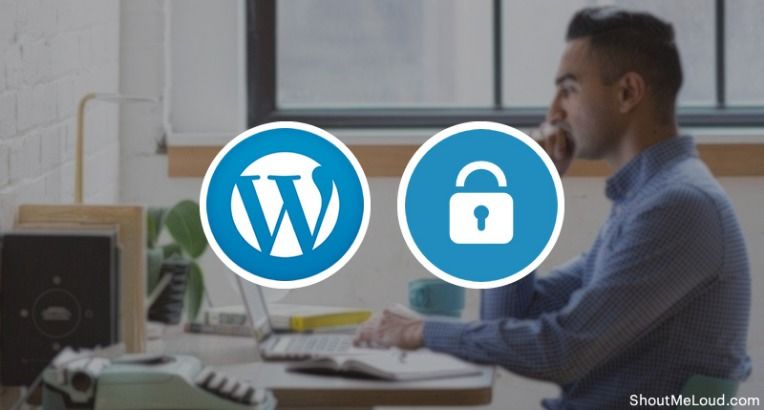
Als je bent zoals de meeste bloggers, probeer je waarschijnlijk altijd meer verkeer naar je website te krijgen. Soms heb je echter een specifieke situatie waarbij je de andere kant op wilt en één blogpost (of pagina) privé wilt maken of je hele blog privé wilt maken .
Dit kan handig zijn als u een speciale pagina wilt maken voor alleen bepaalde mensen (zoals inhoud die alleen voor leden is) of als u alleen een privélocatie wilt om uw gedachten te delen. Op korte termijn is het ook handig als u een voorbeeld van inhoud in een live-omgeving bekijkt zonder uw lezers bloot te stellen aan inhoud die u niet kunt publiceren.
In dit bericht ga ik twee verschillende manieren delen om WordPress privé te maken. Je zal leren:
- Hoe een enkele blogpost of pagina privé te maken
- Hoe u uw volledige WordPress-site privé kunt maken
Laten we beginnen…
How To Make A Single WordPress Post Or Page Private
WordPress actually has the feature to make a post or page private in the core WordPress software. But to get the most from this feature, it helps to know a few tricks. I’ll discuss why in a second.
First, let’s go through the basic process of making a post private:
To access the privacy settings for a post or page:
- Edit the post or page that you want to make private
- Look for the Visibility option under the Publish box on the right
- Click Edit
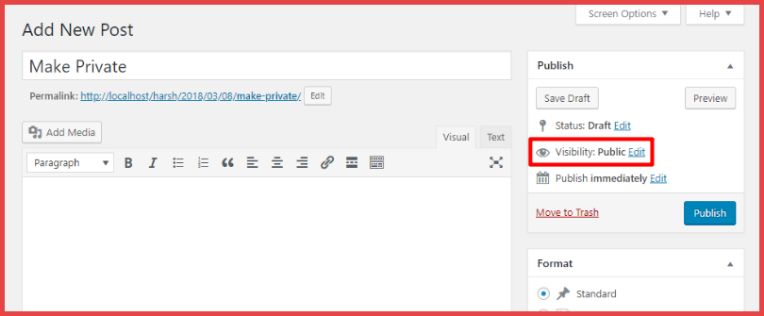
Then, you have two options:
- Password protected – users who try to view the post will need to enter a password before they can see it.
- Private – only users who are logged in and have high-level privileges can see the post. Anyone else who tries to access the post via its direct URL will see a 404 error page.
Below, I’m going to go through exactly how these two options function and share some helpful tricks you can use to make them more flexible.
WordPress Password Protected Visibility Guide
When you select Password protected, you’ll get an option to enter your password:
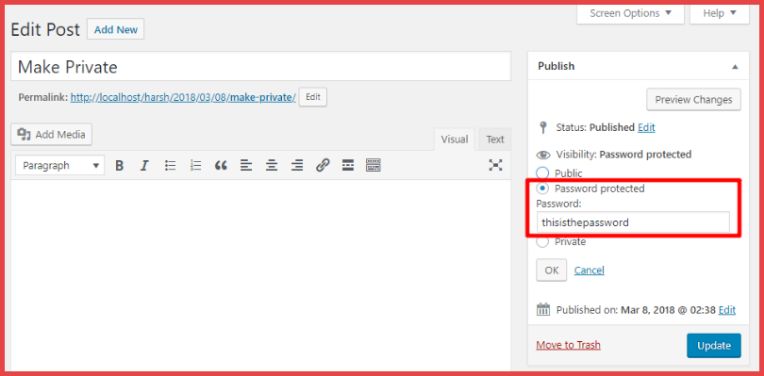
The blog post will still show up on your blog archive list (that means anonymous visitors will still see it in the list), only now it will have Protected: display before the blog post’s title:
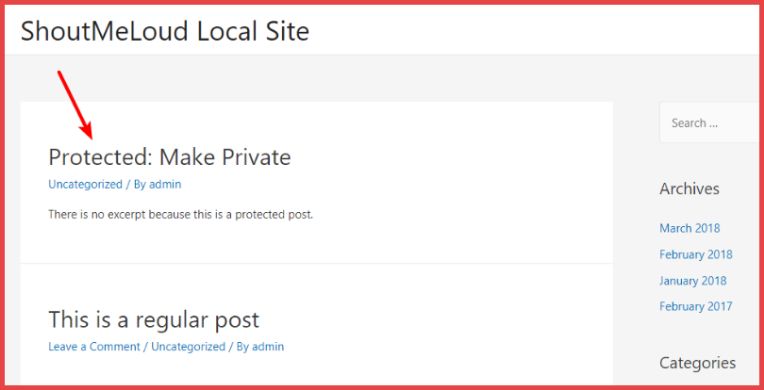
Anyone who clicks on the post will see a login page:
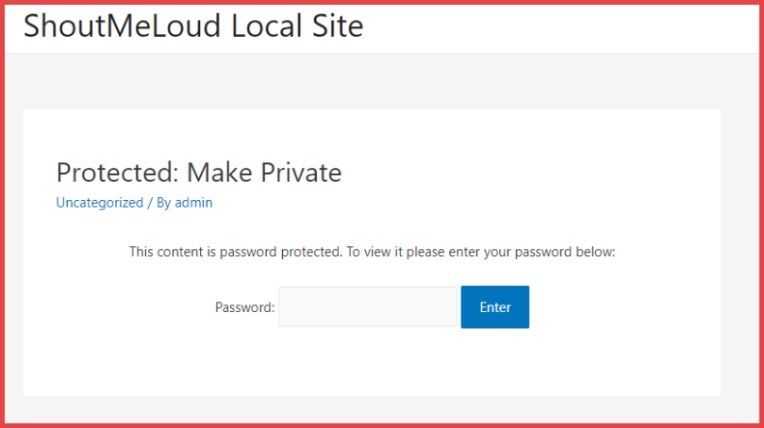
Only after entering the password can they see the post.
All in all, it’s pretty straightforward. But here’s one cool tip that not a lot of people know about:
If you make all the passwords on your private posts the same, a user can unlock all of those posts just by entering the password once. So once they enter the password on the first post, all the other posts will be available.
On the other hand, if you use different passwords, users will need to enter the password for each post with a different password.
Pretty cool, right?
By making the passwords the same (or different), you can easily make multiple posts private and still have detailed control over who has access.
WordPress Private Visibility Guide
If you choose to make a post or page Private instead of Password protected, then the only people who will be able to see the post are logged in users with the user role of Administrator or Editor:
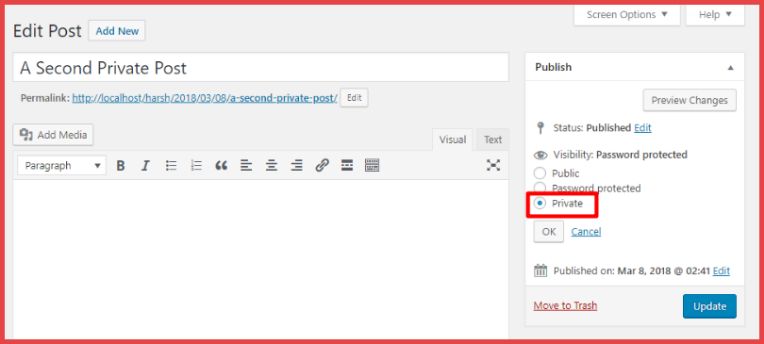
Users who are logged in and have those user roles will be able to see the post. The only difference is that WordPress adds Private: in front of the post’s title (instead of Protected: like with the password example above):
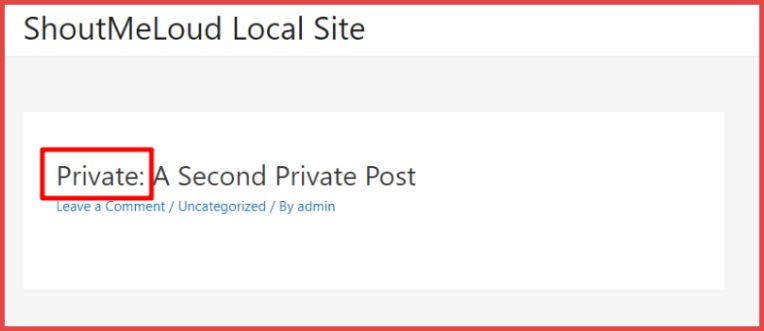
Additionally, when you make a post Private, it will not show up in your blog archive page. Again, that’s another difference from password protection.
If someone tries to access the private post’s URL directly, they’ll see a standard 404 error page like this:
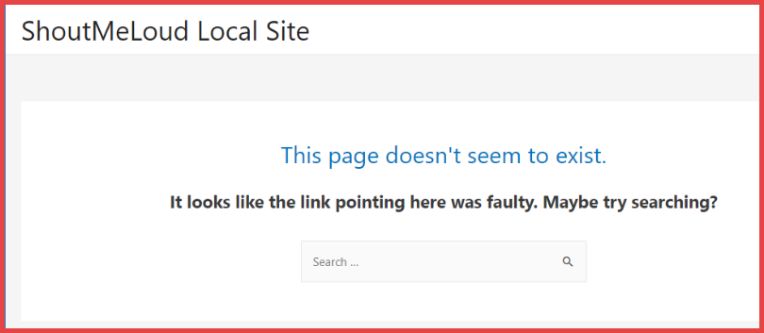
Like password protection, I have another neat trick for you to make this functionality more powerful:
If you want people other than administrators and editors to be able to see your private content, you can use a free plugin called User Role Editor to give them that ability.
For example, to let regular logged in users see private posts, you can:
- Go to Users → User Role Editor (after installing and activating the plugin)
- Make sure that you see Subscriber in the drop-down (this is the default role for regular users at your site)
- Check the boxes for read_private_pages and read_private_posts
- Click Update to save your changes
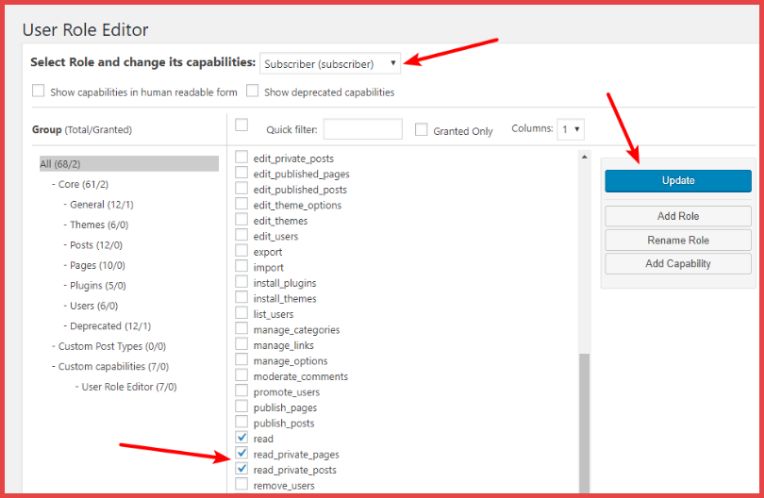
Now, even your regular WordPress users will be able to see all of your private posts and pages (as long as they’re logged in).
How To Make Private website using WordPress
Sometimes, you might want to go beyond individual posts and pages to make your entire WordPress site private.
In that case, you have a few options depending on your needs. If you:
- Just want to make your site private while you’re performing maintenance, you’ll probably be best off using a WordPress maintenance plugin.
- Need a complicated private site where you’re able to accept payment in exchange for access to your site, then you’ll be best off with a WordPress membership plugin.
- Want a basic private site where users need to log in to see your content, you can use the My Private Site plugin that I’ll discuss below.
My Private Site is the most general private site plugin, so that’s why I’m going to use it for this tutorial on how to make your entire WordPress site private.
Make sure you install and activate the plugin first.
Step 1: Turn On Private Site Functionality
To make your site private after activating the plugin:
- Go to Settings → Private Site on your WordPress dashboard
- Check the box for Private Site
- Save your changes
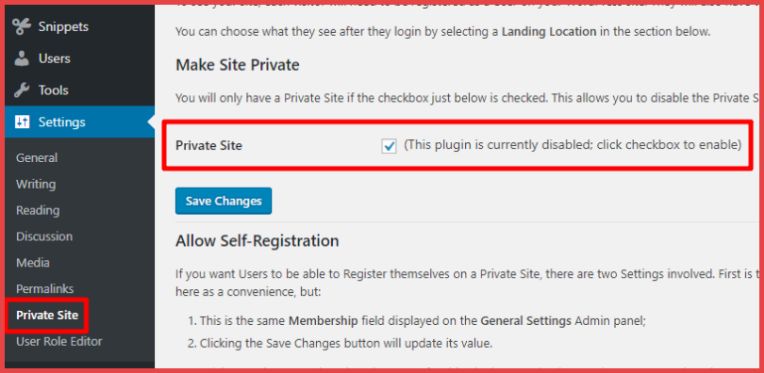
At this point, your site is private. Anyone who isn’t already logged in will see the regular WordPress login page if they try to access any part of your site:
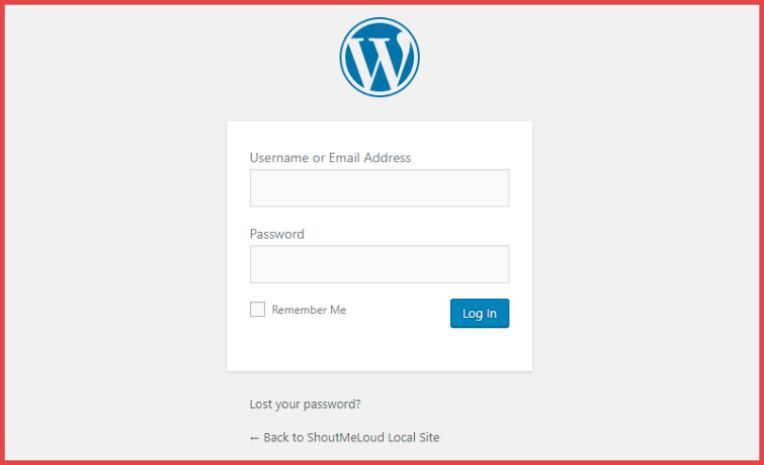
You should still configure a few additional settings to control how things function, though.
Step 2: Decide If People Can Register Themselves On Your Site
Next, scroll down to the Allow Self-Registration section and choose whether or not to let people create an account at your site:
- If you check the box, your site is still fairly public because anyone can create an account to see your content.
- If you leave the box unchecked, you’ll need to manually create user accounts for all the people that you want to be able to see your site.
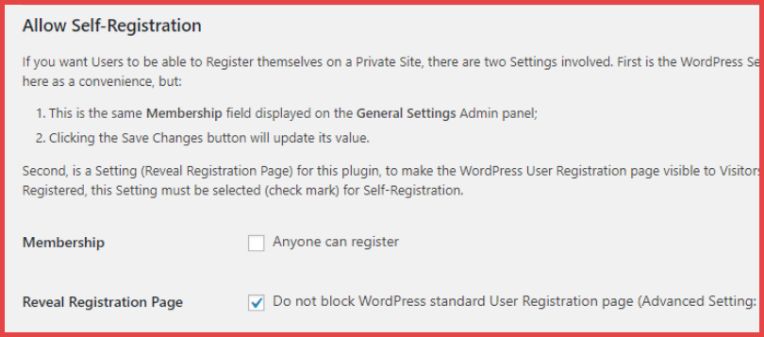
Step 3: Control How Users Log In To Your Site
In the Landing Location and Custom Login sections, you can:
- Choose which page a user goes to after they log in
- Create your own custom login page to use instead of the default WordPress login page
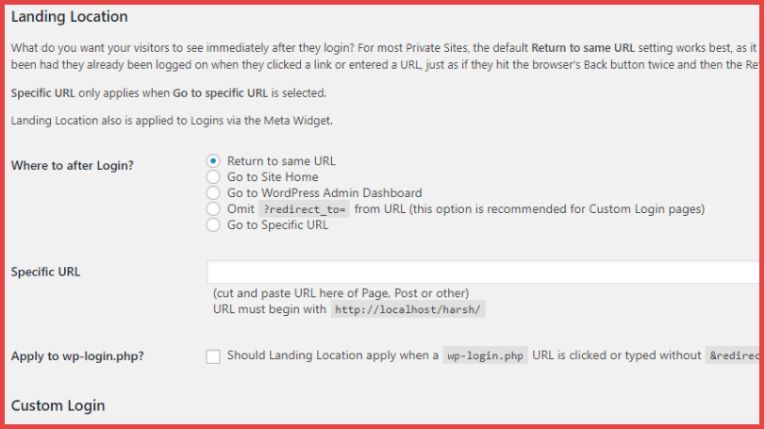
Step 4: (Optional) Make Some Pages Public
If you still want to make some content on your site public, you can use the Visible Exclusions section to make:
- Your homepage public
- A specific piece of content public
- An entire category public (using the URL Prefix feature)
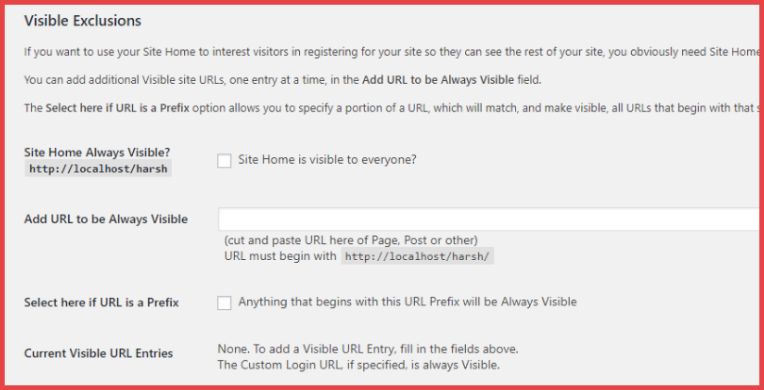
Final Thoughts On Making WordPress Private
If you just need to make individual posts or pages private, the core WordPress functionality is helpful and, with some of the tricks shared above, pretty flexible too.
To make your entire site private, you’ll need a plugin. My Private Site provides a good general option. But for more specific uses, you might be better off using a membership plugin, maintenance plugin, or maybe even a learning management system.
Do you have any other questions about how to make WordPress private? Share in the comments and we will try to help.
Here are a few hand-picked guide for you to read next:






















